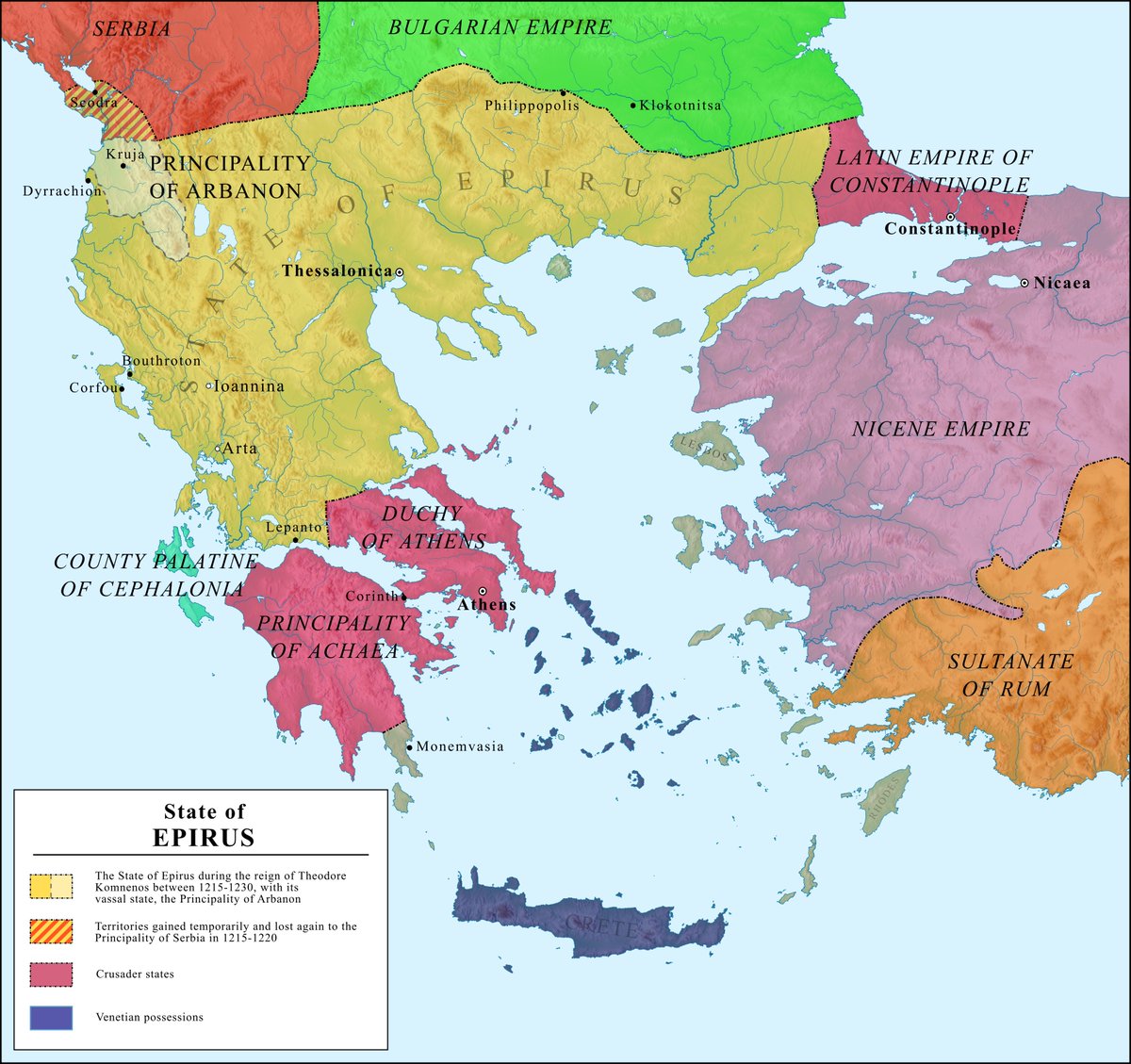
In an era of religious loyalties, a prince that changed sides.
A League of princes against a multi continental Empire.
An ageing maverick, but an ageless national hero.
Story in the evening ...
A League of princes against a multi continental Empire.
An ageing maverick, but an ageless national hero.
Story in the evening ...
https://twitter.com/Arby_K/status/1448838679196168197
Gjergj Kastrioti was born in 1405 to Gjon Kastrioti and Voisava. The Kastrioti were one of the Albanian noble families that ruled a region precariously placed between the Ottoman Empire and Venice. 1/10 

Arbëria was a semi independent region in the Balkans during the time of the Eastern Roman Empire. But it was captured by Sicily in 1272, who created the Kingdom of Albania. But their rule was short lived since their position was weakened due to civil war in Sicily. 2/10 



Kingdom of Albania collapsed in the 14th century and was replaced by many principalities, with the Thopia family ruling the largest among them. The Kastrioti family had to contend with Catholic Venice and Orthodox Serbia as the powers of the region. 3/10 

With the fall of the Serbian Empire in the 14th century, there were no strong contenders to stop the Ottoman expansion into the Balkans. When the Ottomans came knocking in 1415, Gjon Kastrioti gave up his son, Gjergj, as a hostage. 4/10 

The Ottomans had captured Adrianople in 1365, renaming it to Edirne and making it their capital. It was to Edirne that Gjergj Kastrioti was taken. He grew up in the Ottoman capital becoming a Muslim taking the name Iskander. 5/10 

Iskander took part in the military campaigns in the Balkans for the Ottomans and soon they had control over Albania. Gjon Kastrioti allied with Venice against the Ottomans, but the Albanian rebellion was a failure and ended with Kastrioti's death in 1437. 6/10 

The Catholic armies allied with each other and defeated the Ottoman forces at Niš in 1443. This victory induced Iskander to change sides and acquire the Albanian capital Krujë. However, the Christian forces fell at Varna in 1444 making it an Ottoman victory on the whole. 7/10 



But Iskander, or Skanderbeg as he is better known, refused to submit to Ottoman rule. He allied with other Albanian principalities and formed the League of Lezhë to resist Ottomans. For the next two decades, Skanderbeg notched up consistent victories against the Ottomans. 8/10 

The League withstood an Ottoman attempt to retake Krujë in 1450. This was followed by a campaign in 1452 led by Sultan Mehmed, which again ended in defeat for the Ottomans. However, the Sultan was able to capture Constantinople the next year. 9/10 



Skanderbeg withstood Ottoman rule till his death in 1468. He received support from Naples, Venice and Rome after the fall of Constantinople, but the resistance collapsed soon after his death. Albania disappeared into the Ottoman Empire till it was re-formed centuries later. 10/10 

• • •
Missing some Tweet in this thread? You can try to
force a refresh














